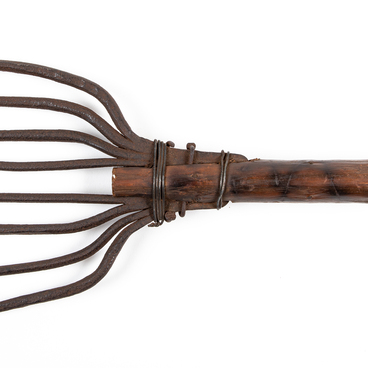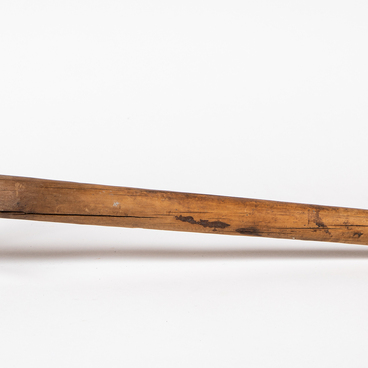The collection of the Sheltozero Veps Ethnographic Museum named after Rurik Petrovich Lonin includes a lynx claw (Il´besen künz´), donated to the museum in 1977 by Vladimir Vasilyevich Antipov, a local resident and the son of a Veps hunter. It is presented in the section “The Worldview of the Veps. The Element of the Forest”. The lynx claw was stored together with a piece of sulfur in a matchbox, which was made at a safety match factory in 1878.
The Veps have a special attitude towards the forest. For many men, hunting was a vital trade, the success of which depended not only on the skill of the hunter, but also on special amulets, their knowledge and understanding of nature, and faith in the magical powers of the forest. Respect for supernatural power and observance of rituals was, according to the beliefs of the Veps, a guarantee of safety, otherwise one could get lost and not return home. For example, there was a belief that a lost hunter, in order to be able to get out of the forest, had to take off his clothes, turn them inside out and put them back on. Only after that did he have a chance to find the right path.
The skill of the Veps hunters was known far beyond their lands. They were often visited by hunters from large cities and St. Petersburg. For a generous reward, the guests of the capital were accompanied to the bear’s den, and had an organized proper and safe hunt. Hunting was most often carried out in March, when a frozen crust on snow formed. But the hunter began to look for a den in early winter, and this work required high skill. Having found the den, the hunter checked it from five to ten times during the winter, so that he could later show it to St. Petersburg guests for a fee. During the hunt, a group of men surrounded a bear den and at a distance of 10–15 paces began shooting into the air to wake the beast and make it jump out of the den.
Hunting was a great help in the life of the Veps
family. The veps hunted fur-bearing animals: squirrel, hare, fox, mink, lynx,
as well as upland, or forest, game; black grouse, wood grouse, partridge, duck,
hazel grouse. Some of the loot was left in the family, while the rest was sold
in cities and at major fairs.


